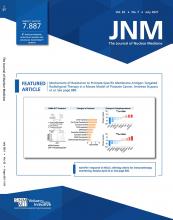REPLY: We are happy to respond to the 4 concerns raised by Dr. Ekaterina Dadachova in her letter to the editor commenting on our Brief Communication “Oncology-Inspired Treatment Options for COVID-19” (1).
Regarding the first 2 points, we would like to emphasize that these experiments were performed during the height of the devastating first COVID-19 peak in New York City, when very little was known about the etiology, transmission, and possible treatments for this virus. Without the ability to use animal models, we nevertheless recognized that the uncertainty, the general dearth of knowledge, and the rapidly evolving situation at that time merited publication of our data as a Brief Communication to provoke thought and discussion on a potential approach to treating this disease.
Regarding the third point: the suggested references, including some interesting papers authored by Dr. Dadachova, were not appropriate for this Brief Communication because they do not address Auger therapy. Future publication of the ongoing studies may warrant citation of this work.
Lastly, the critical advantage of Auger therapy, as described in our Brief Communication, is that Auger electron cascades are highly localized, providing potential advantages over other forms of ionizing radiation when it comes to destroying virions. The letter’s final point references the “18 kGy of radiation” required for sterilization of bone grafts from HIV virions (2); this figure of course applies to uniform external γ-irradiation. In the case of an Auger-emitting radionuclide bound to a virion, the locally absorbed energy must be considered; this may exceed megagray levels in small volumes near the decay site (3, 4).
- © 2021 by the Society of Nuclear Medicine and Molecular Imaging.







